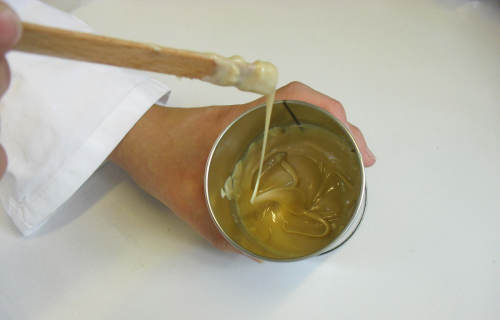
Cars, aircraft, rotor blades for wind turbines – just a few products manufactured using adhesives. More than 820 000 tons of adhesive were produced in Germany in 2010, according to the German Adhesives Association – Industrieverband Klebstoffe.
Most of these adhesives are manufactured from petroleum-based materials, although adhesives made from renewable raw materials such as starch, cellulose, dextrins and proteins are gradually becoming available.
Adhesive based on polylactic acid
Researchers at the Fraunhofer Institute for Environmental, Safety and Energy Technology UMSICHT are working on further new adhesive formulas based on renewable raw materials.
In cooperation with the Recklinghausen site of the Westfälische Hochschule, University of Applied Sciences, and the companies Jowat, Logo tape, and Novamelt, and with support from Germany’s Federal Ministry of Food, Agriculture and Consumer Protection, researchers at UMSICHT in Oberhausen are developing a pressure-sensitive adhesive for industrial applications.
Pressure-sensitive adhesives are based on backbone polymers, which give the adhesives their inner strength (cohesion). The challenge for the UMSICHT researchers is to develop a backbone polymer from the raw material polylactic acid. What makes this biological material particularly attractive is its low production cost. Since lactic acid is produced on an industrial scale, costs are in the region of prices for fossil-based backbone polymers.
“However, the properties of polylactic acid are completely different from those of the polymers used to date, such as polyacrylates and styrene-based block copolymers,” explains Dr Stephan Kabasci, who heads the UMSICHT renewable resources business unit. This means that the researchers have to develop a completely new formula.



